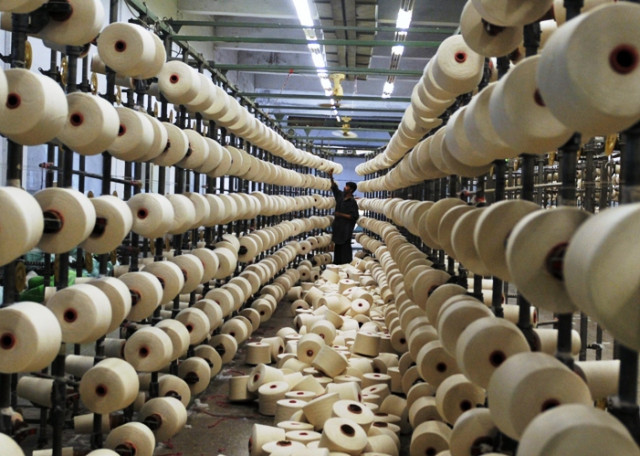Is the textile sector finally headed for consolidation?
Energy crisis sparked a trickle of sell-offs that has the potential to become a wave.

The SECP has recently lowered the amount of paid-up capital required to be a corporate finance advisory to Rs2 million, opening up this business to a lot more young professionals than before. PHOTO: AFP
It all started with the energy crisis. Textile in Pakistan has been through several crises before, but the energy crisis seems to have been a completely different ballgame altogether. Many firms have begun to shut down completely, unable to afford to continue operating with the higher cost base, and not having enough scale to absorb it within their margins or pass it on to their customers.
So the consolidation has begun through need: many of the family-owned textile businesses – which had long resisted the economic logic of consolidation – have finally had to give in and sell their factories because they can no longer afford to keep them running. A typical case is Ehsan Yousaf Textile Mills in Faisalabad, which was forced to shut down. It has been bought out by Tauseef Enterprises, a bigger rival that made the smart decision of geographic diversification: it opened operations in Bangladesh before most of its Pakistani competitors.
The size involved in these transactions is relatively small. The Tauseef Group, for instance, has only Rs4 billion in revenue and the smaller companies it bought out were likely worth significantly less than Rs1 billion, not exactly the kind of number that would have investment bankers salivating (since their fees are often a percentage of the total transaction size). By comparison, Lucky Cement’s acquisition of ICI Pakistan was a transaction worth more than Rs13 billion.
Nonetheless, the number of firms in Pakistan that are likely to be up for sale is high, probably in the hundreds, if not thousands. And their buyers are often not raising any financing or looking for underwriting, given the smaller amounts involved. Some of the more established investment banks may not be interested in such transactions. But younger buccaneers, who can now get a licence for corporate finance advisory much more easily, may well find a lot of business in textile M&A.
The Securities and Exchanges Commission of Pakistan has recently lowered the amount of paid-up capital required to be a corporate finance advisory (an investment banker who does not underwrite transactions) to Rs2 million, opening up this business to a lot more young professionals than before.
A second factor helping increase the potential volume of textile mergers and acquisitions is cultural. There was a time when Pakistani factory-owning families loathed to even consider the idea of selling off their business, seeing it as a matter of shame. In recent years, however, it is becoming more socially acceptable, especially since so many businesses closed off their textile factories and invested the proceeds in more profitable businesses.
The Crescent Group, for instance, discovered that the land that one of their factories was built on in Faisalabad would deliver a far higher rate of return as a real estate development than as a sugar mill. Virtually all major textile-owning families in Punjab have made forays into the real estate business.
And the third factor helping the consolidation process is the fact that retail is becoming an increasingly important part of the textile business. In decades past, export was the be-all, end-all of textile companies. Now, advertising agencies in Karachi have counted more than 100 new brands of lawn being launched every year, with many of those backed by textile factories. To build sustainable retail operations requires a greater level of scale than most textile companies currently have.
In short, it may not be exciting, and most of it will be below the radar since the firms are not listed, but a serious M&A boom may be coming to the textile sector.
Published in The Express Tribune, March 18th, 2013.
Like Business on Facebook to stay informed and join in the conversation.



















COMMENTS
Comments are moderated and generally will be posted if they are on-topic and not abusive.
For more information, please see our Comments FAQ